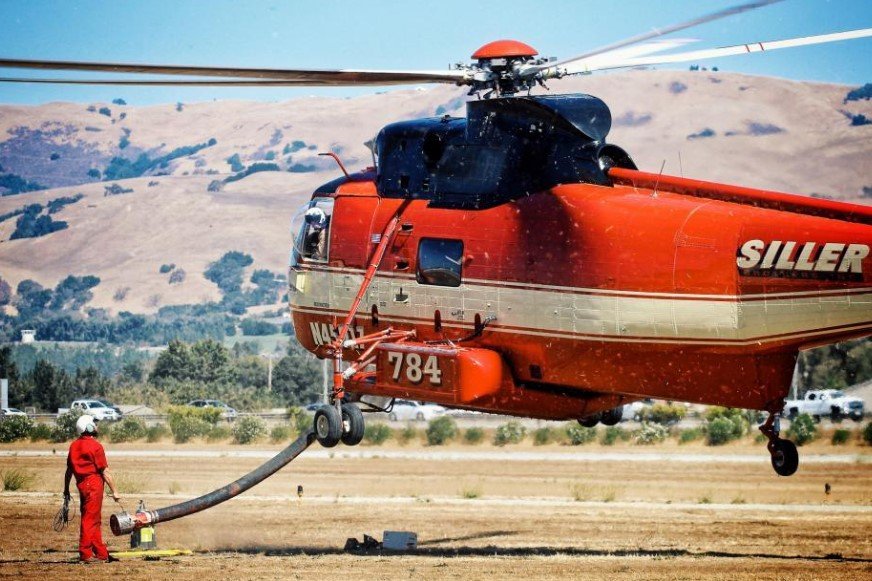Three-Acre Blaze Near Union Pacific Tracks Halted as Crews Mop Up Burn Area
A brush fire that sparked near railroad tracks in South Oroville Monday afternoon was quickly brought under control thanks to a fast and forceful response from CAL FIRE crews, stopping what could have been a much worse situation in the middle of peak fire season.
The so-called Georgia Fire, named after the nearby road rather than the state, flared up just before 4 p.m., charring about three acres of dry vegetation near Baggett Marysville Road and Lincoln Boulevard. By 4:25 p.m., the forward spread of the flames had been stopped.
Fire Ignites in Dry Terrain, Crews Hit Back Hard
It was a familiar scene for CAL FIRE Butte Unit, which has spent recent weeks in a near-constant state of readiness.
The first emergency call came in at 3:49 p.m. Just minutes later, plumes of smoke were already drawing attention along the edge of the Union Pacific Railroad corridor. Conditions were dry and windy — a risky combo.
Within moments, six fire engines, a water tender, two battalion chiefs, and a fire safety officer were speeding through the backroads of Butte County. It wasn’t just ground support either. The department dispatched a PG&E water-dropping helicopter out of the Chico Air Attack Base, putting air resources in play before the fire had a chance to grow legs.
It worked.

Crews Stop Spread in Less Than 40 Minutes
The Georgia Fire was, by wildfire standards, mercifully small. But it had all the ingredients to spiral out of control.
Brush fires near rail lines can behave unpredictably — trains can spark dry vegetation, and flames can chase embankments like a fuse line. The area also sits within striking distance of neighborhoods, highways, and utility infrastructure.
Still, CAL FIRE teams locked it down quickly.
-
Fire growth was halted within 36 minutes of the first 911 call.
-
Only three acres burned.
-
No structures were damaged.
-
No injuries were reported.
“It could’ve been worse,” said a nearby resident watching mop-up crews hose down smoldering pockets of grass. “We’ve seen it happen before.”
Mop-Up Underway as Crews Monitor Hot Spots
Even though the forward progress was stopped, firefighters weren’t calling it a day just yet. They remained on scene for at least three more hours, checking for hidden embers and knocking down residual heat.
It’s what CAL FIRE calls “mop-up,” but it’s more than just cleaning up.
In wildfire-prone terrain, small flare-ups can relight fires hours or even days later. That’s why engines don’t leave until they’re confident the area is fully secured. Crews used hand tools to stir up soil and douse any lingering heat, while the helicopter made precision drops to cool hotspots hard to reach by foot.
One firefighter could be heard yelling to a colleague, “Still hot on the west side!” as a trail of steam hissed up from the ground.
A Small Fire, But a Big Reminder
While the Georgia Fire was relatively minor, it came at a time when California’s fire crews are stretched thin and the public is on edge.
The summer fire season is in full swing, and Butte County — no stranger to devastation — remains dry as ever. The area saw less snowmelt this spring, and a warm June dried out the understory even faster than usual.
CAL FIRE has warned that 2025 could bring “above normal” wildfire activity across northern California due to fuel buildup and persistent drought conditions.
The Georgia Fire might’ve been a close call. It could also be a preview.
Railways and Roadside Fires Becoming More Common
There’s something of a pattern when it comes to fires near train tracks, especially in places like Butte County where freight lines snake through rural brush.
The combination of hot brake shoes, diesel engines, and steel-on-steel friction can toss sparks or superheat small objects along the tracks. During summer, that’s enough to ignite kindling-dry grass in seconds.
According to CAL FIRE’s data:
| Fire Type | Avg. Annual Incidents | Primary Cause |
|---|---|---|
| Roadside Brush Fires | 1,200+ | Vehicle sparks, chains |
| Rail Corridor Fires | 350+ | Train equipment heat |
| Utility Fires | 75+ | Transformer/equipment faults |
In areas like South Oroville, where tracks cut through dry lots near homes, residents have little room for error.
Fire Response Getting Faster, But Strain is Showing
The Georgia Fire may be a textbook example of an effective early response, but it also highlights how much pressure CAL FIRE is under this summer.
Firefighters have been juggling small blazes statewide nearly every week. While none have yet reached the scale of the Camp or Dixie fires, officials warn that conditions are eerily similar.
And crews? They’re tired. Many are logging overtime, bouncing between fires in the northern counties without much rest in between.
Still, they show up. Six engines rolling out in under ten minutes? That kind of hustle saves homes — and lives.
Community Bracing for a Long Summer
For the folks in Oroville, Monday’s fire might just be the beginning. The smell of smoke now triggers memories of years past.
One man standing outside a corner store near Baggett Road watched helicopters dip low over his neighborhood and said, “I keep an evacuation bag by the door now.”
Another woman nodded, adding, “Every summer, we get a little more nervous.”
Fire season doesn’t officially peak until August. That leaves weeks — maybe months — of hot, windy days ahead.
For now, the Georgia Fire is out. But the fight, clearly, is not over.
